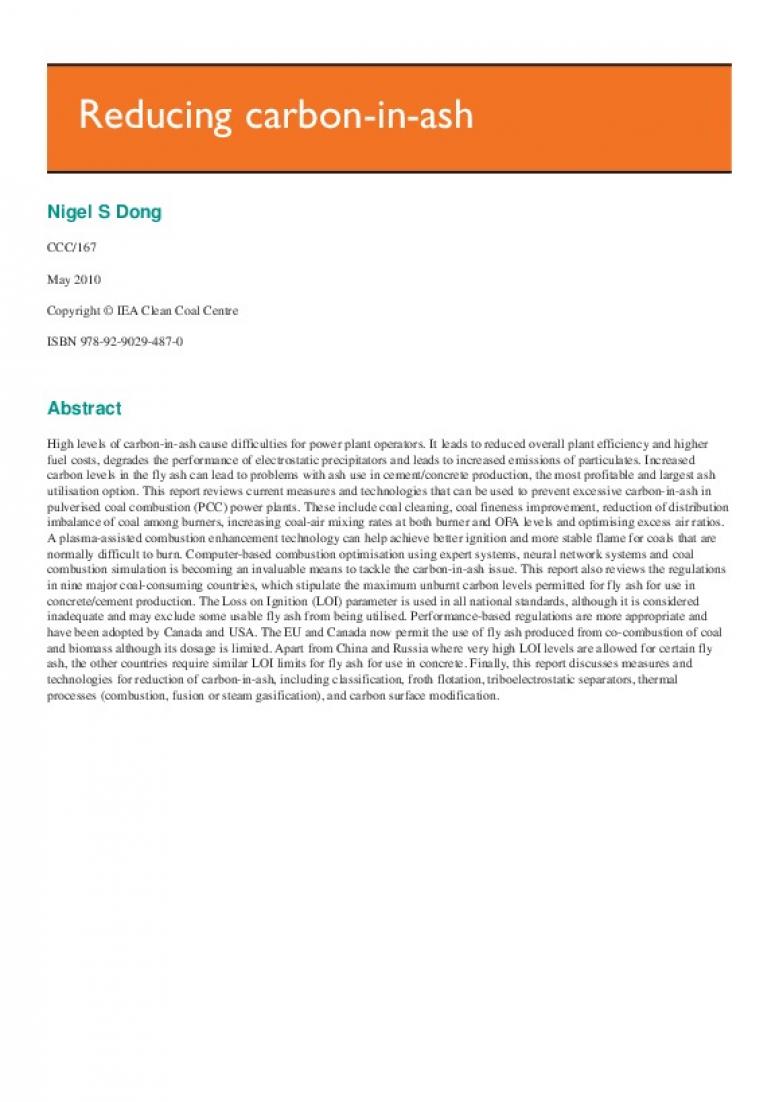CCC/167
May 2010
Copyright © IEA Clean Coal Centre
ISBN 978-92-9029-487-0
Abstract
High levels of carbon-in-ash cause difficulties for power plant operators. It leads to reduced overall plant efficiency and higher fuel costs, degrades the performance of electrostatic precipitators and leads to increased emissions of particulates. Increased carbon levels in the fly ash can lead to problems with ash use in cement/concrete production, the most profitable and largest ash utilisation option. This report reviews current measures and technologies that can be used to prevent excessive carbon-in-ash in pulverised coal combustion (PCC) power plants. These include coal cleaning, coal fineness improvement, reduction of distribution imbalance of coal among burners, increasing coal-air mixing rates at both burner and OFA levels and optimising excess air ratios. A plasma-assisted combustion enhancement technology can help achieve better ignition and more stable flame for coals that are normally difficult to burn. Computer-based combustion optimisation using expert systems, neural network systems and coal combustion simulation is becoming an invaluable means to tackle the carbon-in-ash issue. This report also reviews the regulations in nine major coal-consuming countries, which stipulate the maximum unburnt carbon levels permitted for fly ash for use in concrete/cement production. The Loss on Ignition (LOI) parameter is used in all national standards, although it is considered inadequate and may exclude some usable fly ash from being utilised. Performance-based regulations are more appropriate and have been adopted by Canada and USA. The EU and Canada now permit the use of fly ash produced from co-combustion of coal and biomass although its dosage is limited. Apart from China and Russia where very high LOI levels are allowed for certain fly ash, the other countries require similar LOI limits for fly ash for use in concrete. Finally, this report discusses measures and technologies for reduction of carbon-in-ash, including classification, froth flotation, triboelectrostatic separators, thermal processes (combustion, fusion or steam gasification), and carbon surface modification.
| Attachment | Size |
|---|---|
| 931.38 KB |


